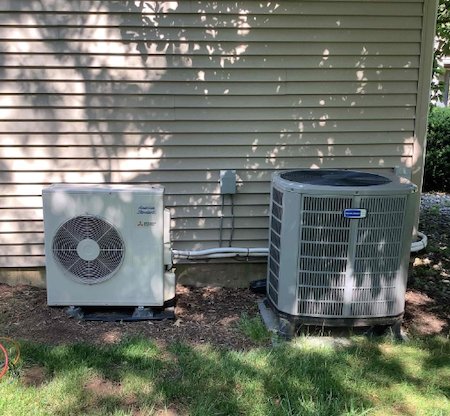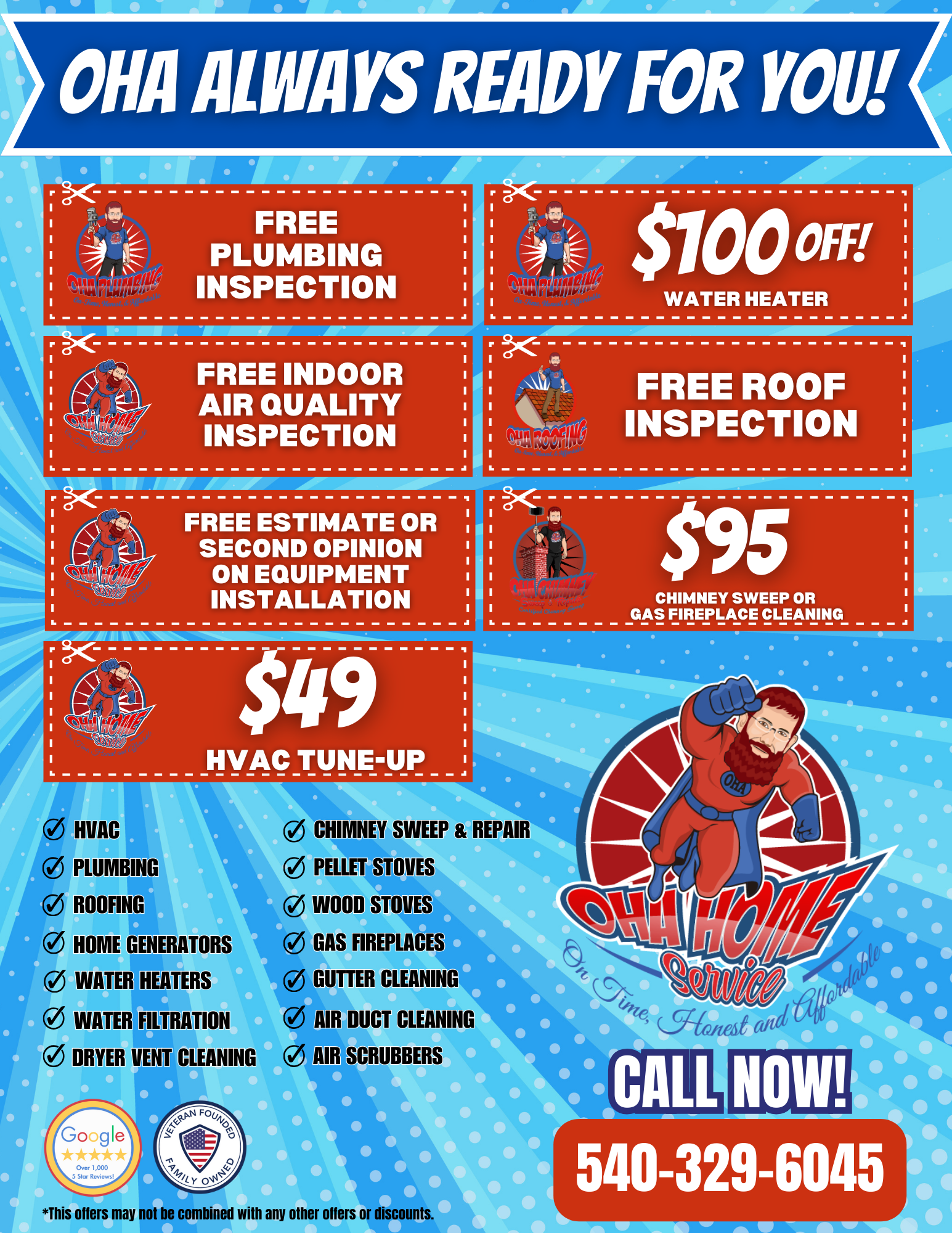Introduction
In the scorching heat of summer, air conditioning is a savior that keeps us comfortable and cool. However, like any other appliance, air conditioners can break down or experience issues over time. It’s important to know some essential air conditioning repair tips to ensure your AC system functions optimally and efficiently. In this article, we will guide you through valuable maintenance and troubleshooting techniques to help you keep your cool regarding air conditioning.
Air Conditioning Repair Tips
1. Understanding the Basics of Air Conditioning
Before diving into the repair tips, it’s crucial to have a basic understanding of how air conditioning systems work. Air conditioners utilize a complex mechanism involving compressors, condensers, evaporators, and refrigerants to remove heat from the indoor environment and send it outside, leaving the interior cool and comfortable.
Air conditioning systems come in various types, including central air conditioning, ductless mini-split systems, and window units. Each type has its unique features and maintenance requirements. It’s important to familiarize yourself with the specific type of system you have to ensure effective repairs and maintenance.
2. Regular Cleaning and Maintenance
Regular cleaning and maintenance play a vital role in ensuring the smooth functioning of your air conditioning system. Keeping the various components clean can prevent dust, dirt, and debris from accumulating and affecting the system’s efficiency.
Before performing any maintenance tasks, turn off the power to your air conditioner. Then, begin by cleaning the exterior unit and removing any leaves, twigs, or debris that may have accumulated around it. Use a soft brush or vacuum cleaner to remove dust and dirt from the fins and coils gently. Avoid using excessive force to prevent bending or damaging delicate components.
3. Checking and Replacing Air Filters
Air filters trap dust and pollutants from the air, preventing them from entering the AC system. Over time, these filters can become clogged, obstructing airflow and reducing the cooling capacity. Regularly checking and replacing air filters is essential to maintain proper airflow and ensure clean indoor air quality.
To check the air filter:
- Locate the air intake vent or grille, which is usually located on the return side of the system.
- Open the vent or grille and remove the filter.
- Inspect the filter for dirt, dust, and debris. If the filter appears dirty or clogged, it’s time to replace it.
When selecting a new air filter, choose the correct size and type recommended by the manufacturer. High-efficiency filters may be more effective at capturing smaller particles but can restrict airflow if incompatible with your system. Follow the manufacturer’s guidelines for filter replacement intervals, as they can vary based on factors such as usage and indoor air quality.
4. Inspecting and Cleaning Condenser Coils
Condenser coils, located in the air conditioner’s outdoor unit, are responsible for releasing heat absorbed from the indoor air. These coils can accumulate dirt and debris, hampering the heat transfer process. Regular inspection and cleaning of condenser coils improve the system’s efficiency and prevent overheating.
To clean the condenser coils:
- Start by turning off the power to the outdoor unit.
- Remove any visible debris or obstructions around the unit.
- Gently brush off the dirt and debris from the coils using a soft brush or a vacuum cleaner with a brush attachment.
- Avoid using excessive force that may damage the delicate fins.
For more thorough cleaning, consider using a coil cleaner recommended by the manufacturer. Follow the instructions carefully, as some cleaners may require dilution or rinsing. Apply the cleaner to the coils, let it sit for the recommended time, and then rinse it off with a gentle spray of water. Allow the coils to dry completely before turning the power back on.
5. Clearing Debris Around the Outdoor Unit
The outdoor unit of your air conditioner requires ample space for proper airflow. Clear any debris, such as leaves, grass, or twigs, from the surrounding area to ensure unrestricted air circulation. This simple step can significantly enhance the cooling performance of your AC system.
Inspect the area around the outdoor unit regularly and remove any debris that may have accumulated. Trim any overhanging branches or vegetation that could block the airflow or fall onto the unit during storms. Ensure at least two feet of clearance on all sides of the unit for optimal airflow.
6. Ensuring Proper Airflow
Obstructions in the air ducts or vents can restrict airflow, reducing cooling capacity. Regularly check and clean the air ducts and vents to ensure a steady airflow throughout your home. Adequate airflow helps maintain consistent cooling and prevents strain on the system.
Inspect the air vents and registers in each room and ensure furniture, curtains, or other objects do not block them. Vacuum or dust the vents regularly to remove any accumulated dust or debris that could impede the airflow. If you notice significant airflow issues or inconsistent cooling, it may be necessary to have a professional duct cleaning service performed to remove built-up debris and improve air circulation.
7. Monitoring and Adjusting Thermostat Settings
The thermostat acts as the control center for your air conditioning system. Monitoring and adjusting the thermostat settings to ensure optimal comfort and energy efficiency is crucial. Utilizing programmable thermostats can help you set different temperature levels based on your schedule, saving energy when you are away.
Regularly check the thermostat to ensure it functions correctly and displays accurate temperatures. If you suspect the thermostat is malfunctioning, you can perform a simple test using a separate thermometer. Place the thermometer near the thermostat and compare the readings. If there is a significant difference, it may be time to replace or recalibrate the thermostat.
Consider using programmable thermostats to automate temperature adjustments based on your daily routine. These thermostats allow you to set different temperature levels for specific times of the day, ensuring energy savings when the house is unoccupied or during nighttime hours. Refer to the manufacturer’s instructions or consult a professional for assistance in programming and optimizing your thermostat settings.
8. Lubricating Moving Parts
Many air conditioning systems have moving parts, such as motors and fans, that require lubrication to operate smoothly. Regularly inspect these parts and apply lubricant as per the manufacturer’s instructions. Proper lubrication minimizes friction, reduces wear and tear, and extends the lifespan of your system.
Before lubricating any moving parts:
- Ensure that the power to the system is turned off.
- Refer to the manufacturer’s guidelines or user manual to locate the specific points where lubrication is required.
- Use the recommended lubricant and apply a small amount to the designated areas.
- Avoid over-lubricating, as excess grease or oil can attract dirt and cause damage.
- Checking Electrical Connections
Loose or faulty electrical connections can lead to system malfunctions and even pose safety risks. Periodically inspect the electrical connections of your air conditioning unit and ensure they are tight and secure. If you notice any signs of damage or loose wires, it’s important to have them repaired by a qualified professional.
Turn off the power to the unit before inspecting the electrical connections. Carefully examine the wiring and terminals for any signs of fraying, corrosion, or loose connections. If you are unsure or uncomfortable handling electrical components, it is best to seek professional assistance. An electrician or HVAC technician can safely inspect and repair any electrical issues to ensure the safe operation of your air conditioning system.
9. Managing Refrigerant Levels
The refrigerant is a crucial component that absorbs and releases heat during the cooling process. Low refrigerant levels can result in insufficient cooling and increased energy consumption. Regularly check the refrigerant levels and consult a professional if you suspect a leak or require a recharge.
Managing refrigerant levels should be handled by a qualified HVAC technician. They have the necessary equipment and expertise to handle refrigerants and perform any necessary repairs or recharges safely. If you notice a decrease in cooling performance or suspect a refrigerant leak, contact a professional to diagnose and address the issue.
10. Dealing with Strange Noises or Odors
Unusual noises or unpleasant odors from your air conditioner indicate underlying issues that need attention. Grinding, rattling, or squealing sounds indicate worn-out motor or loose parts, while musty or pungent odors may indicate mold or a malfunctioning component. Promptly address these issues to prevent further damage.
If you hear unusual sounds from your air conditioner, turn off the unit and contact a technician. They can inspect the system, identify the noise source, and perform the necessary repairs. Ignoring strange noises can lead to more significant problems and potentially result in a complete system breakdown.
Similarly, unpleasant odors emitted from the air conditioning system should not be ignored. Mold or mildew growth within the unit or ductwork can affect indoor air quality and potentially cause health issues. A professional technician can inspect and clean the system, eliminating the source of the odor and ensuring fresh and clean airflow.
11. Addressing Water Leaks
Water leaks from your air conditioning unit can damage your property and indicate a problem with the condensate drain line or the evaporator coil. If you notice water pooling around the unit or damp spots on walls or ceilings, it’s crucial to identify and resolve the issue to avoid further damage promptly.
Start by turning off the air conditioning system and checking the condensate drain line. This line is responsible for removing excess moisture from the system. Inspect the drain line for clogs or blockages and remove any debris if necessary. Additionally, ensure that the drain pan is clean and free from obstructions.
If the issue persists or you cannot locate the leak’s source, it’s recommended to contact a professional technician. They can thoroughly inspect the system, identify the cause of the leak, and perform the necessary repairs or replacements.

12. Troubleshooting Common Issues
Sometimes, air conditioning problems can be resolved with simple troubleshooting steps. In this section, we’ll provide a comprehensive guide to common issues you may encounter with your air conditioning system. By following the step-by-step instructions below, you can diagnose and rectify these problems on your own.
Poor Cooling:
- Check the thermostat settings to make sure they are correctly configured.
- Adjust the temperature setting and observe if it improves the cooling.
- Examine the air filters for clogs or dirt buildup.
- Clean or replace the filters to enhance airflow and cooling performance.
- Inspect the condenser unit outside for any debris or obstructions that may hinder airflow.
- Remove any leaves, grass, or debris blocking the condenser unit.
Short Cycling:
- Clean or replace the air filter, as a dirty or clogged filter can cause short cycling.
- Observe if the cycling improves after cleaning or replacing the filter.
- Consult a professional technician to evaluate the sizing of the air conditioner if it is oversized for the space it is cooling.
- Make appropriate adjustments to ensure efficient operation.
Uneven Temperature Distribution:
- Check that all vents and registers are open and unobstructed.
- Remove any furniture, drapes, or objects that may block the airflow from the vents.
- Partially close vents in areas with excessive cooling and fully open vents in areas with insufficient cooling.
- Balance the air distribution throughout your home for more consistent temperatures.
Strange Odors:
- Clean or replace the air filters to eliminate potential odors caused by mold or mildew.
- Use a mildew-removing cleaner to wipe down the evaporator coils.
- Consider contacting a professional technician for a thorough cleaning and inspection if the odor persists.
- Proper cleaning and disinfection will help eliminate the odor and prevent further mold development.
Noisy Operation:
- Turn off the air conditioner and inspect the outdoor condenser unit for loose or damaged parts.
- Check the indoor blower unit for any debris or obstructions that may be causing the noise.
- If you are not able to identify or resolve the issue, it’s recommended to seek assistance from a professional technician who can diagnose and repair the problem accurately.
Remember, each troubleshooting scenario may have specific steps and considerations. If you are unsure or unable to resolve the issue on your own, it’s important to refer to the manufacturer’s instructions or consult a professional for expert assistance. By taking a cautious approach and seeking help when needed, you can ensure the safe and effective troubleshooting of your air conditioning system.
13. Knowing When to Call a Professional
While homeowners can perform many air conditioning repairs and maintenance tasks, there are instances where professional expertise is necessary. It’s essential to recognize when a problem is beyond your knowledge or abilities and contact a qualified HVAC technician.
If you encounter any of the following situations, it’s recommended to seek professional assistance:
- Refrigerant leaks or recharges
- Motor or compressor failures
- Electrical issues or wiring problems
- Complex system malfunctions
- System installation or replacement
- Warranty repairs or service
Professional technicians have the experience, tools, and knowledge to handle complex repairs and ensure your air conditioning system’s safe and efficient operation. When in doubt, it’s always better to rely on professionals to avoid further damage or potential safety hazards.
Conclusion
Taking care of your air conditioning system through regular maintenance and repairs is essential to keep it running smoothly and efficiently. By following the essential air conditioning repair tips provided in this article, you can ensure optimal cooling performance, improve energy efficiency, and prolong the lifespan of your AC unit.
Remember to clean and maintain the system regularly, check and replace air filters, inspect condenser coils, ensure proper airflow, monitor thermostat settings, lubricate moving parts, and promptly address any issues. Additionally, be aware of when to seek professional help for complex repairs or system malfunctions.
Keeping your air conditioning system in top condition allows you to enjoy cool and comfortable indoor environments even during the hottest days of summer.
Looking for reliable air conditioning services in Fredericksburg, Ashland, Chantilly, or nearby areas? Choose OHA Home Service, your trusted veteran-owned business. We offer tailored AC services for year-round comfort. Our skilled technicians ensure top-quality service with AC repair, installation, maintenance, and tune-ups. We prioritize your satisfaction and provide 24/7 emergency repairs. Trust us for exceptional care and comfort. Contact OHA Home Service today and stay cool all year long!
FAQs (Frequently Asked Questions)
1. How often should I clean or replace my air filters?
It is generally recommended to clean or replace air filters every 1 to 3 months, depending on factors such as usage and indoor air quality. However, referring to the manufacturer’s guidelines or instructions specific to your air conditioning system is best.
2. Can I use lubricant for my air conditioner’s moving parts?
No, it’s important to use the lubricant specified by the manufacturer. Different systems and components may require different types of lubricants, so always refer to the manufacturer’s recommendations.
3. Why is my air conditioner making a buzzing sound?
A buzzing sound from the air conditioner can indicate various issues, such as loose parts, electrical problems, or a failing motor. It’s best to turn off the unit and contact a professional technician to diagnose and resolve the issue.
4. How can I improve the energy efficiency of my air conditioning system?
To improve energy efficiency, you can:
- Set the thermostat to an appropriate temperature.
- Use programmable thermostats to adjust temperatures based on your schedule.
- Ensure proper insulation and seal any air leaks.
- Regularly clean and maintain the system.
- Consider upgrading to energy-efficient models if your current system is old and inefficient.
5. Does my air conditioner produce a musty odor usually?
No, a musty odor from the air conditioner is often a sign of mold or mildew growth within the system or ductwork. It’s essential to have the system inspected and cleaned by a professional technician to eliminate the source of the odor and ensure clean airflow.











